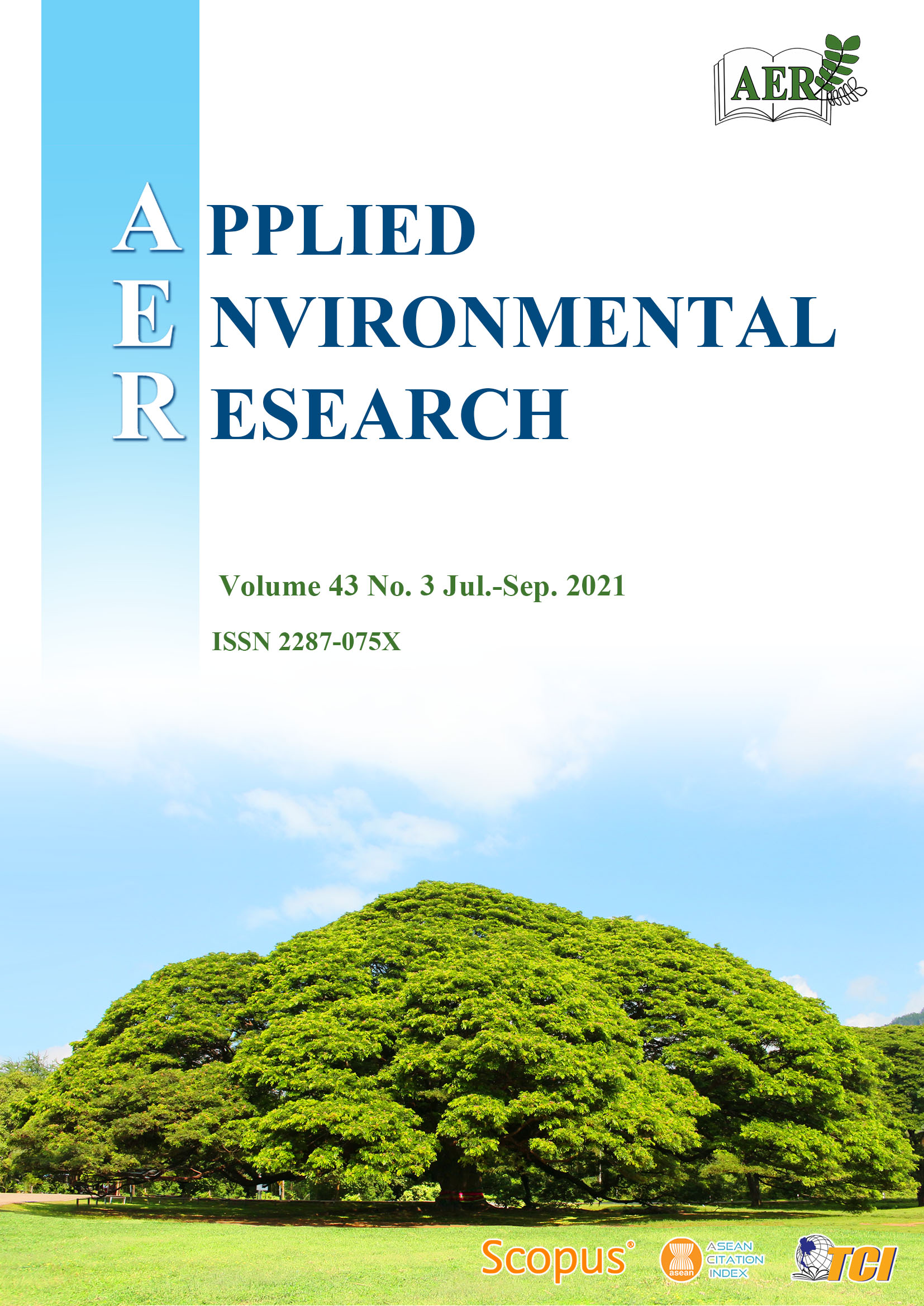Comparison of Direct-reading and Gravimetric Methods of Particle Measurement in a Science Building, Silpakorn University
Main Article Content
Abstract
This study aimed to develop relationships between particulate matter (PM) concentrations obtained from a direct-reading instrument to those from a gravimetric method. TSI DustTrak II Aerosol Monitors (Model 8530), a direct-reading instrument for PM10 and PM2.5 measurement, together with personal air pumps connected to a Sensidyne cyclone and a SKC Personal Environmental Monitor (PEM) for gravimetric PM10 and PM2.5 measurements respectively were deployed in the Faculty of Science building, Silpakorn University, Nakhon Pathom, Thailand. Comparison of the results from each instrument indicated that PM10 and PM2.5 concentrations obtained from the TSI DustTrak were higher. The linear relationship from ordinary least squares (OLS) regression between PM10 data determined by TSI DustTrak (x) and Sensidyne cyclone ( ) was significant (R2=0.92) and could be represented as = 0.272x. For PM2.5, the relationship between concentrations determined by TSI DustTrak (x) and SKC PEM ( ) was also significant (R2=0.92) and represented by = 4.848 . Validation of both equations was undertaken by comparing predicted values from these relationships against the actual concentrations found by gravimetric analysis, with R2=1.0 and 0.92 for PM10 and PM2.5, respectively. It is suggested that these site-specific OLS regression equations can provide fast and convenient estimation of concentrations derived by gravimetric analysis from direct-reading TSI DustTrak monitor data.
Article Details

This work is licensed under a Creative Commons Attribution-NonCommercial 4.0 International License.
Published articles are under the copyright of the Applied Environmental Research effective when the article is accepted for publication thus granting Applied Environmental Research all rights for the work so that both parties may be protected from the consequences of unauthorized use. Partially or totally publication of an article elsewhere is possible only after the consent from the editors.

